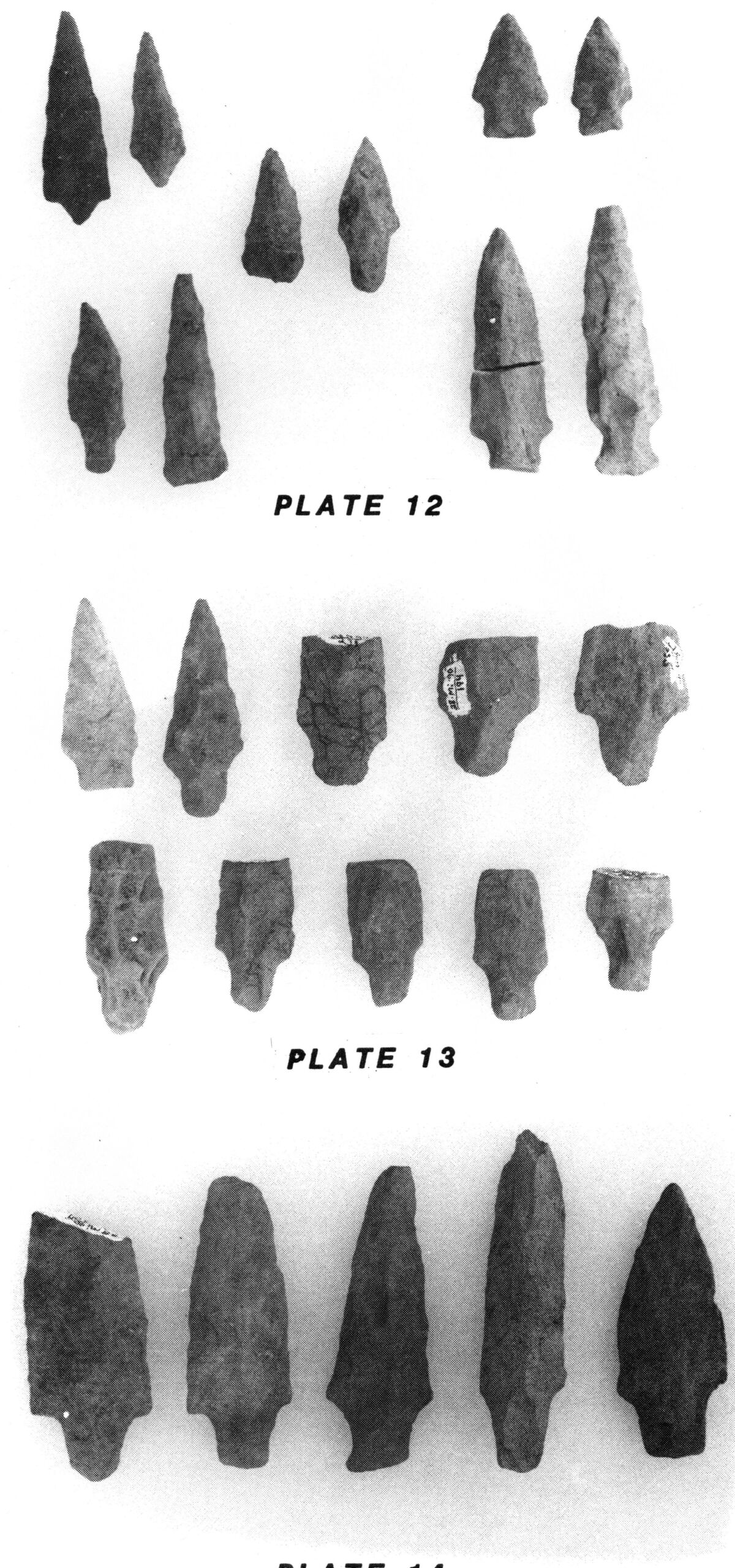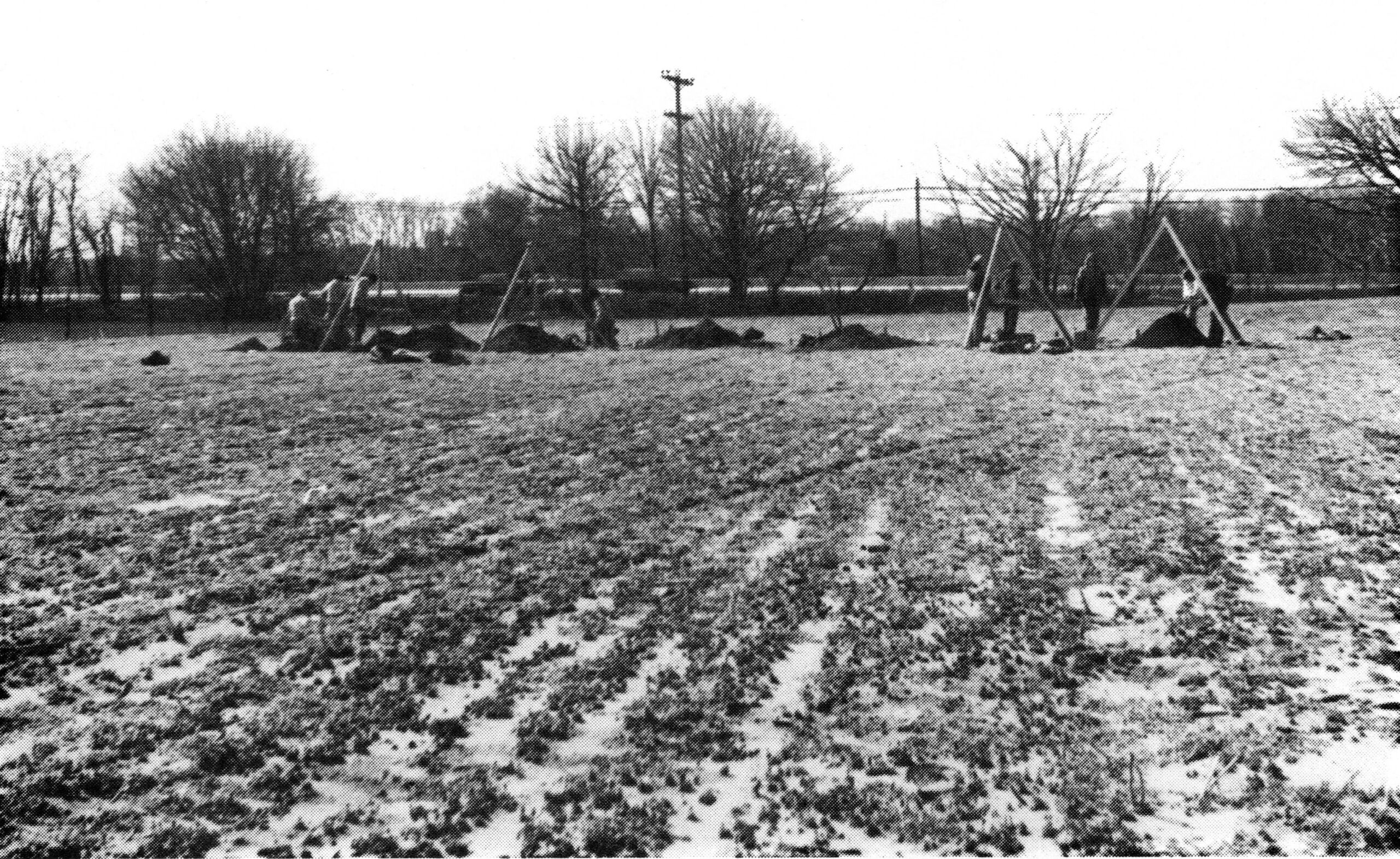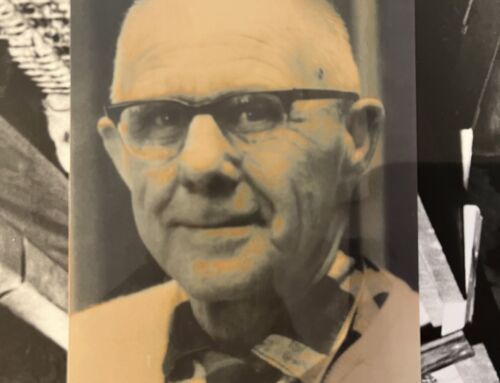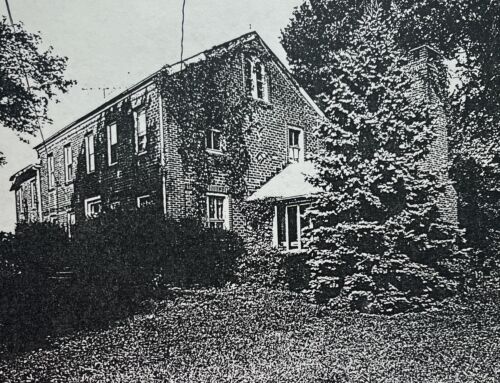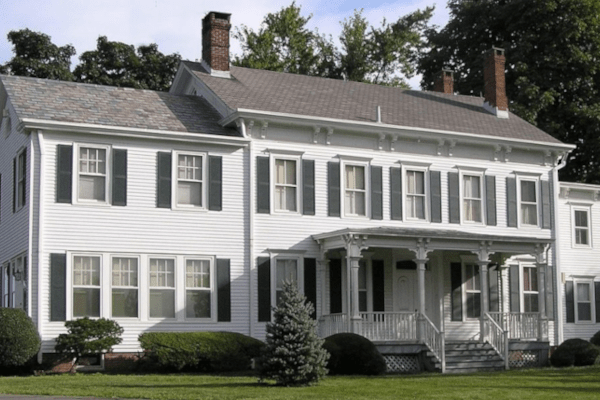Artifacts from the Plow Zone
During the Scudders Mill Road Bypass archaeological dig in 1981-1982, a wide variety of stone tools were discovered. Artifacts included projectile points, knives, drills, pestles, milling stones, net sinkers, scrapers, dart throwers, grooved axes and hammarstones. These items provide researchers with clues as to what life was like for the Lenape living in the Plainsboro area. These tools are categorized as things used for hunting, fishing, farming or food processing. The tools left by the Indigenous people tell us what kind of resources were available to them: oak-hickory forests inhabited by deer, wild turkeys and other small game animals; fish in the nearby rivers and streams; as well as the availability of grains, nuts, seeds and edible plants.
Hundreds of years after the Lenape diaspora due to the arrival of Euro-American colonists, traces of these Indigenous people remain and are still being found hundreds if not thousands of years since they were left behind. Tilling the soil in preparation for planting, digging in one’s garden and excavating for roads, utilities or new construction could reveal items left behind by the Lenape people. In the Scutters Mill Road bypass construction, 40% of the artifacts were uncovered from the surface to about 12 inches in depth. This “plow zone” is the depth to which a plow would turn over the soil when farmers were preparing to plant crops. When archaeologists were digging pits during the Scudders Mill excavation, they were able to see different layers in the soil, including the plow zone, disturbed by three hundred years of farming.
Many local farmers discovered stone tools over the years throughout Plainsboro. The Scudders Mill archaeological site was known as “Wellnut Hill” by local farmers. Other areas included the Walker-Gordon Farm, along Devil’s Brook, at the intersection of Schalks Crossing Road and Scudder’s Mill Road, at Quail Ridge and at a site off of Grovers Mill Road near the Millstone River.
Artifacts discovered in Plainsboro include those made from shale, quartz, argillite, flint, sandstone, chert and jasper. Dating from the Late Archaic to the Late Woodland periods (3500 B.C.E to 1600 C.E.) artifacts similar to those found in Plainsboro have also been found in South Brunswick, Cranbury, Princeton, West Windsor, Lawrenceville, and Trenton.
Things to think about: What kinds of “artifacts” might the inhabitants of Plainsboro find from our time a hundred years from now? A thousand years from now? How do you think future generations of researchers interpret what life was like in the early 21st century from the items we leave behind?
